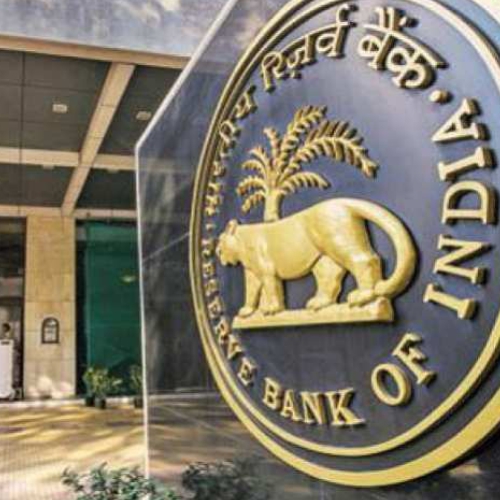Mumbai (Maharashtra): The Reserve Bank of India (RBI), while maintaining the status quo in key policy rate, has raised India’s GDP growth forecast for financial year 2023-24 by 50 basis points to 7 per cent. In its October meeting, the RBI forecast 2023-24 growth at 6.5 per cent.
This upward revision comes on the heels of India reporting more-than-expected July-September quarter growth.
The Indian economy grew 7.6 per cent during the July-September quarter of the current financial year 2023-24, remaining the fastest-growing major economy. India’s GDP growth for the April-June quarter grew 7.8 per cent.
Q3 growth is projected at 6.5 per cent; and Q4 at 6.0 per cent. Real GDP growth for Q1:2024- 25 is projected at 6.7 per cent; Q2 at 6.5 per cent; and Q3 at 6.4 per cent, with risks evenly balanced.
Strong rabi crops sowing–two-thirds have been completed despite the late harvest of kharif crops in some states; manufacturing sector is gaining strength with easing input cost pressures; and a pick-up in demand conditions, according to RBI Governor Shaktikanta Das, are some of the reasons for the revision in 2023-24 growth projections.
“Festival related demand is also spurring households’ discretionary consumption in Q3.13 Investment activity continues to be aided by buoyancy in public sector capex. This is also reflected in the strong growth in steel consumption, cement production and imports of capital goods. Capacity utilisation (CU) in the manufacturing sector continues to remain above the long period average,” Das said.
The RBI monetary policy committee earlier today unanimously decided to keep the policy repo rate unchanged at 6.5 per cent, thus maintaining status quo for the fifth straight occasions.
While deliberating the policy statement Friday morning, RBI Governor Shaktikanta Das attributed declining inflation as the reason behind maintaining the status quo policy stance.
Retail inflation in India continued to ease through October, supported by a relative decline in some of the sub-indexes. The October consumer price index (CPI) came at a four-month low of 4.87 per cent against 5.02 per cent the previous month. Retail inflation in India though, is in RBI’s 2-6 per cent comfort level but is above the ideal 4 per cent scenario.
Das said the MPC also decided by a majority of 5 out of 6 members to remain focused on withdrawal of accommodation to ensure that inflation progressively aligns to the target, while supporting growth.
The three-day bi-monthly monetary policy committee (MPC) meeting of the RBI began on Wednesday. The RBI typically conducts six bimonthly meetings in a financial year, where it deliberates interest rates, money supply, inflation outlook, and various macroeconomic indicators.
For the fourth straight occasion, the monetary policy committee, through its October review meeting, unanimously kept the policy repo rate unchanged at 6.5 per cent, thus maintaining the status quo.
The repo rate is the rate of interest at which RBI lends to other banks.
A relative decline in inflation, barring the latest spike, and its potential for further decline may have prompted the central bank to put the brake on the key interest rate. Inflation has been a concern for many countries, including advanced economies, but India has largely managed to steer its inflation trajectory quite well.
Barring the latest pauses, the RBI raised the repo rate by 250 basis points cumulatively to 6.5 per cent since May 2022 in the fight against inflation. Raising interest rates is a monetary policy instrument that typically helps suppress demand in the economy, thereby helping the inflation rate decline.
In his address today, Governor Das maintained India’s retail inflation projections for 2023-24 at 5.4 per cent, with with Q3 at 5.6 per cent and Q4 at 5.2 per cent. CPI inflation for Q1:2024-25 is projected at 5.2 per cent; Q2 at 4.0 per cent; and Q3 at 4.7 per cent, with risks evenly balanced.
“On the positive side, global commodity prices, particularly, agricultural commodity prices, have softened except rice. 19 For highly import dependent food items like edible oils, international prices continue to remain soft. Domestic milk prices are stabilising. Pro-active supply side interventions by the government are also containing domestic food price pressures. Crude oil has softened considerably, though it may remain volatile,” Das said while projecting inflation figures.
“The near-term outlook, however, is masked by risks to food inflation which might lead to an inflation uptick in November and December. This needs to be watched for second round effects, if any.”
(With inputs from ANI)












